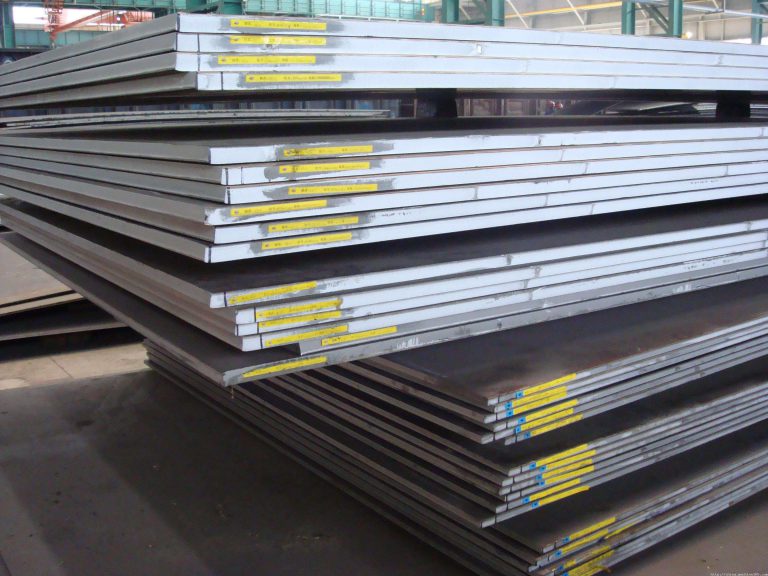ASME sa 516 grade 70 density
SA516Gr.70 is widely used in petroleum, chemical, power station, boiler, and other industries used to make reactors, heat exchangers, separators, spherical tanks, gas tanks, liquefied gas tanks, nuclear reactor pressure shells, boiler drums, liquefied petroleum
Equipment and components such as gas cylinders, high-pressure water pipes of hydropower stations, and turbine volutes.
A516Gr70N meets the requirements of (ASME) ASTMA516/A516M standards, and fully meets the needs of oil gas with a high content of sulfur and hydrogen, reduces sulfur and hydrogen corrosion, reduces equipment maintenance, and increases equipment service life.
The steel plate has the following characteristics: good impact resistance, low-temperature deformation, good welding performance, good fatigue resistance, good anti-layer cracking performance, microalloying, high purity, low carbon equivalent, strong resistance to sulfur and hydrogen,
The products have good dimensional tolerances and surface quality.
We are ASME SA516 Gr.70 and ASME SA516GR.70 steel plate manufacturers,SA516GR.70 stocklist, SA516GR.70 cutting parts, SA 516 GR 70 machined parts supplier. Gangsteel exporter ASME SA516 Grade 70|ASME SA516GR.70 steel plate. SA516GR70 is a carbon pressure vessel steel grade. ASME SA516 GR.70 steel plates stock supplier.Keywords: ASME A516 Grade 70, ASME A516GR.70, ASME A516GR70, ASME A516 GR.70 SA516 Grade 70 steel is a carbon pressure vessel steel grade for moderate and lower temperature service.
SA516 Grade 70 usual request normalized if thickness above 40mm, if not, Gangsteel usual delivery in hot rolled or control rolled station. A516 Gr.70+N or A516gr70N mean that steel grade must be normalized in any thickness.

Since A36 doesn’t include large amounts of nickel or chromium, it doesn’t have excellent corrosion resistance. Stainless metal is now used as one of the supplies for tramlinks, together with aluminium alloys and carbon metal. Duplex grades are typically preferred due to their corrosion resistance and higher energy, allowing a reduction of weight and an extended life in maritime environments. The ease of welding largely depends on the kind of chrome steel used.
asme sa516 grade 70 plate
Heat treatment
1.·SA515Gr60, SA515Gr70, SA516Gr60, SA516Gr70, SA516Gr60N, SA516Gr70N thickness ≤1.5in, (40mm) steel plate is usually supplied in rolled state, steel plate can also be ordered by normalizing or stress relief, or normalizing plus stress relief.
2. Thickness>1.5in.(40mm) steel plate should be normalized.
3. Unless otherwise specified by the buyer, the thickness ≤ 1.5in, (40mm) steel plate, when notch toughness is required, normalizing should be carried out.
4. If approved by the buyer, it is allowed to use a cooling rate greater than that in the air to improve toughness, but the steel plate only needs to be in the range of 1100-1300°F (595-705°C) subsequently
This implies that steels which might be very hardenable (i.e. tend to form martensite under moderately low cooling rates) should be furnace cooled. The particulars of the process rely upon the type of steel and the exact alloy concerned. In any case the result is a more ductile material however a lower yield strength and a lower tensile strength.
The tensile strength of SA516Gr70 is 70 kilopounds per square inch, which is more than 482 as everyone usually says.
The main element content is C Mn Si, and the control of p and s determines its performance.
There are very few other trace elements.
Standard Specification for Carbon Steel Plates for Medium and Low-Temperature Pressure Vessels
SA516Gr70 Chemical detail
C≤0.30��Mn��0.79-1.30��P≤0.035��S��≤0.035��Si��0.13-0.45
SA516Gr70 Property Grade U.S (SI), Tensile strength ksi(MPa) 70 (485) and 70-90 (485-620)
- The minimal 10.5% chromium in stainless steels provides resistance to approximately 700 °C (1,300 °F), while 16% chromium provides resistance as much as roughly 1,200 °C (2,200 °F).
- Type 304, the commonest grade of chrome steel with 18% chromium, is resistant to approximately 870 °C (1,600 °F).
- Other gases, corresponding to sulfur dioxide, hydrogen sulfide, carbon monoxide, chlorine, additionally attack stainless steel.
- Moreover, stainless-steel may be rolled into sheets, plates, bars, wire, and tubing.
They can’t be strengthened by cold work to the same degree as austenitic stainless steels. The invention of stainless-steel adopted a collection of scientific developments, starting in 1798 when chromium was first shown to the French Academy by Louis Vauquelin.
For giant workpieces or excessive quantity parts, automobile-bottom furnaces are used so staff can simply move the elements in and out. Once the annealing process is successfully accomplished, workpieces are sometimes left in the oven so the parts cool in a controllable method. While some workpieces are left within the oven to chill in a managed style, other supplies and alloys are removed from the oven.
The process produces a harder, more ductile materials, and eliminates columnar grains and dendritic segregation that typically occurs during casting. Normalizing improves machinability of a component and provides dimensional stability if subjected to further heat remedy processes. Unlike most AISI grades similar to 1018, 1141, or 4140, American Society for Testing and Materials A36 steel sa516gr.70 steel supplier just isn’t designated by chemical composition. This means that whereas most grades will need to have added alloys that match between certain percentages, A36 should meet specific mechanical standards. For example, metal bars and plates should have a minimum yield energy of 36,000 pounds per sq. inch.
What is ASTM standard for steel?
The Annual Book of ASTM Standards for Steel consists of 8 volumes. It contains formally approved ASTM standard classifications, guides, practices, specifications, test methods and terminology and related material such as proposals. Steel Plates for Boiler and Pressure Vessels. Steels for Machine Structural Use.
Type 304 and Type 316 stainless steels are unaffected weak bases similar to ammonium hydroxide, even in high concentrations and at high temperatures. The same grades exposed to stronger bases corresponding to sodium hydroxide at high concentrations and excessive temperatures will probably expertise some etching and cracking. Increasing chromium and nickel contents provide increased resistance. Replacing some carbon in martensitic stainless steels by nitrogen is a current improvement.[when? ] The restricted solubility of nitrogen is increased by the stress electroslag refining course of, by which melting is carried out underneath high nitrogen stress.
